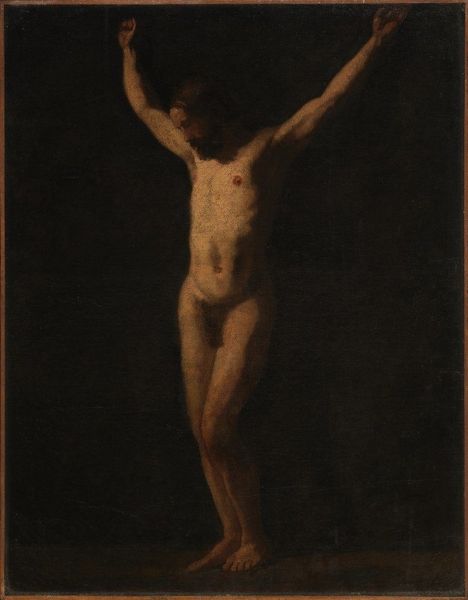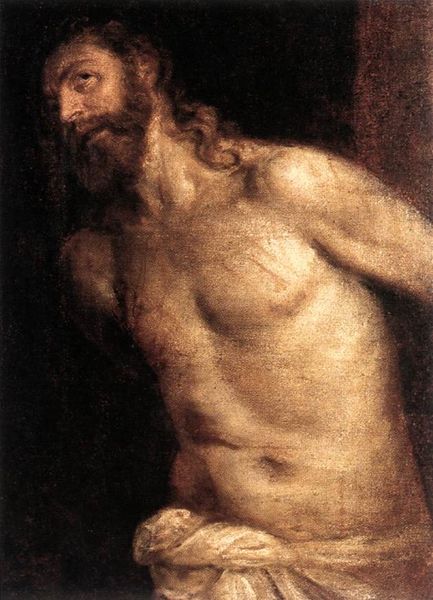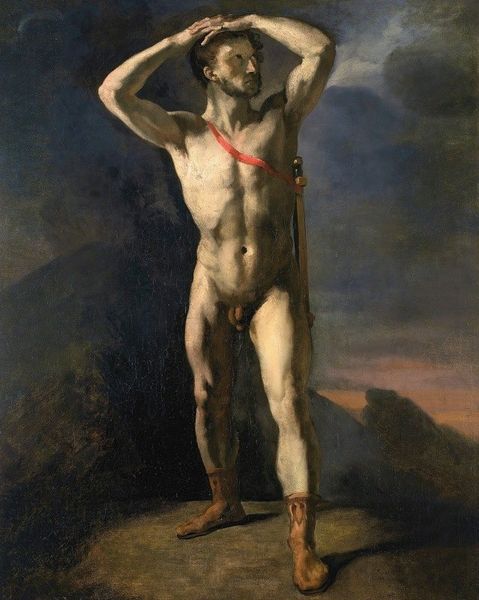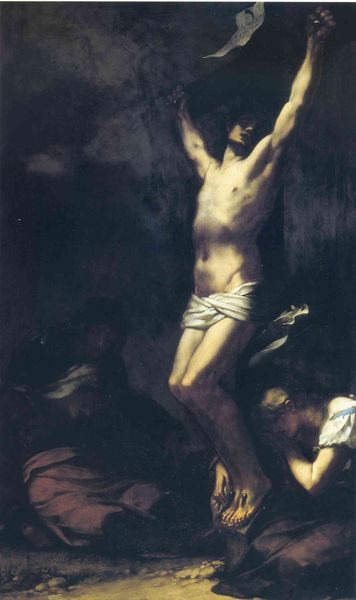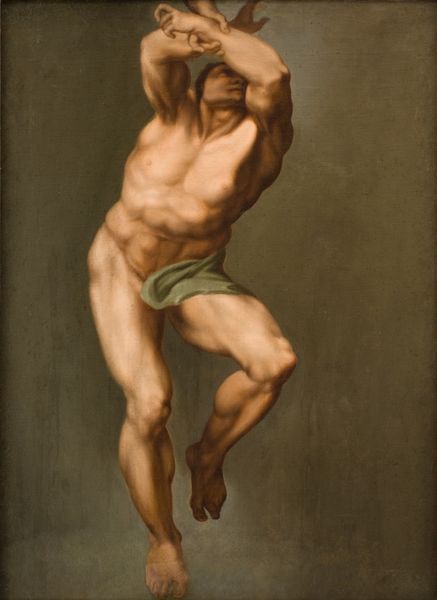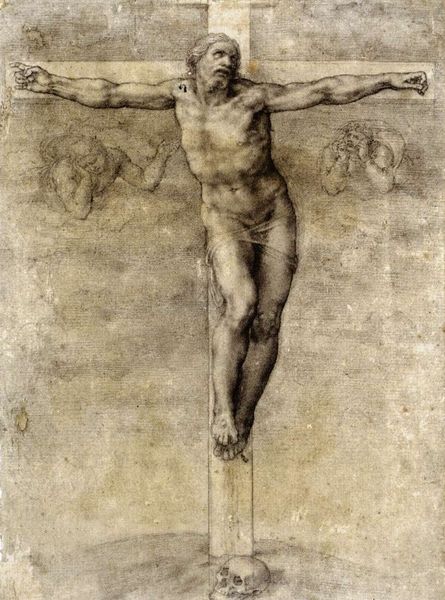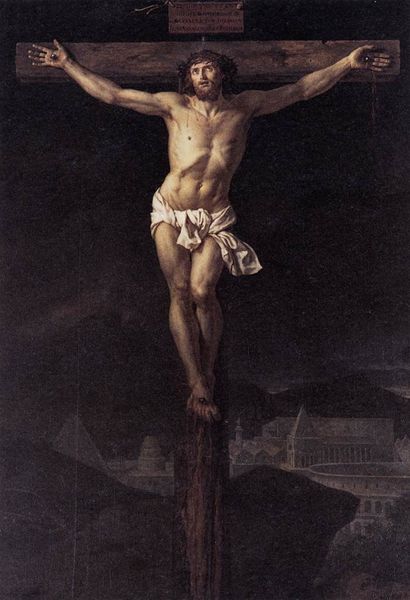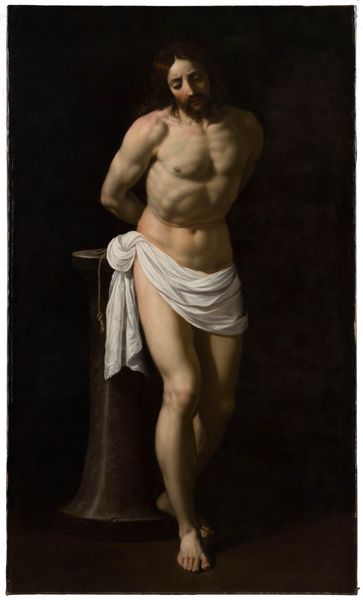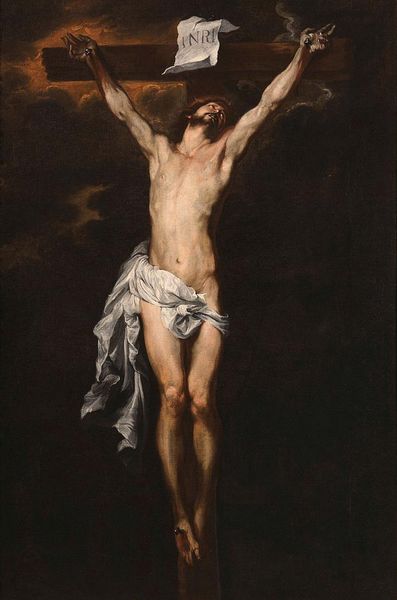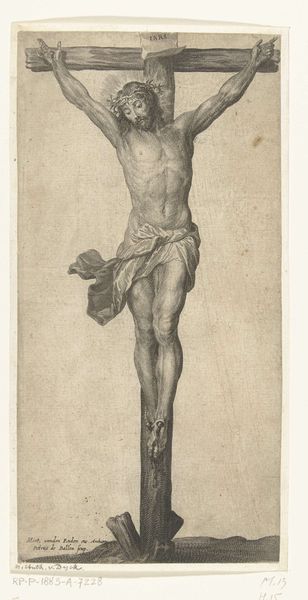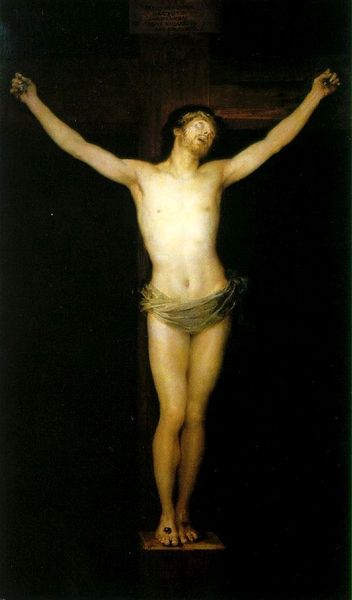
Dimensions: 54 x 96 cm
Copyright: Public domain
Editor: We're looking at Thomas Eakins’ "The Crucifixion" from 1880, currently residing at the Philadelphia Museum of Art. It’s an oil painting, and I’m immediately struck by its stark realism. It doesn’t glorify the event; rather, it feels incredibly human and vulnerable. What elements stand out to you from a formal perspective? Curator: The painting presents a compelling study in contrasts, doesn't it? Consider the geometry: the rigid, vertical thrust of the cross against the sagging, curvilinear form of the figure. And reflect upon the deployment of light; the figure is rendered in bright illumination. How might we understand these formal devices, these oppositions? Editor: I guess the contrast amplifies the feeling of suffering, visually pitting the unyielding cross against Christ’s physical submission. Curator: Precisely. Further contemplation should be given to the surface and texture. Note the loose brushwork and visible impasto. What effects might these methods generate? Editor: The brushstrokes create a sense of movement, a kind of restless energy, even within a static scene. And the texture, especially on the figure, adds to the raw, almost palpable physicality. Curator: It is through such elements that Eakins departs from pure representationalism, injecting emotive power into the formal arrangement. One observes that colour plays a diminished role, favouring instead a muted palette dominated by earthen tones. Consider the effect of this limited colour range in light of the intense subject. Editor: It draws focus to the human form and the starkness of the event. I initially perceived a very realistic portrayal but understanding the formal arrangement, there appears an added layer of intentional emotion, of restrained feeling. Curator: Exactly, art possesses the power to trigger emotional and philosophical thoughts!
Comments
No comments
Be the first to comment and join the conversation on the ultimate creative platform.
